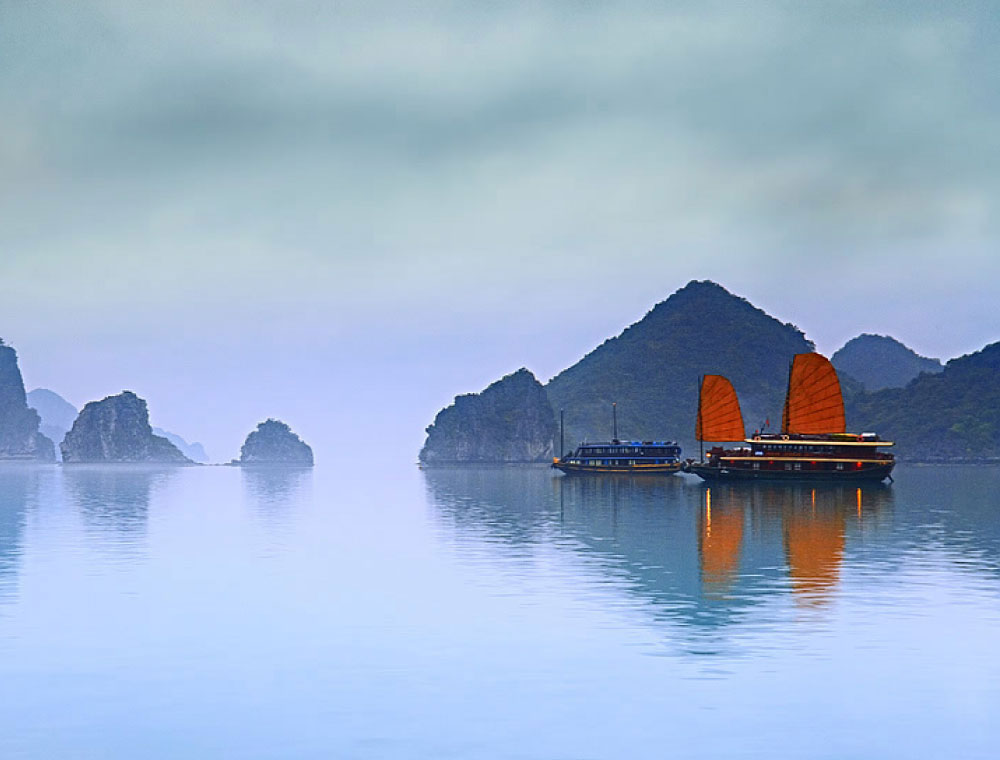WHITE SANDY BEACHES
First-time visitors to Phu Quoc are often surprised at its sugary-white beaches and crystal-clear water. The most spectacular beaches are along the western coast and southern tip of the island. Not far from the main town there are private beaches with cozy hideaways that are perfect for the family holiday.
BAI DAI - PHU QUOC
Some of the longest, cleanest, most pristine and deserted beaches in Vietnam, if not the world. Phu Quoc island has over 50km of bright, white-sandy beaches. In a February 2008 ABC poll, Bai Dai (Long Beach) was voted the “cleanest and most beautiful beach in the world”.
Facing the Gulf of Thailand, Bai Dai does not receive the swells common to other Vietnamese beaches on the South China Sea coast, making it an ideal beach for lazy swimming and relaxation. Still largely non-commercial, Bai Dai is said by locals to be the longest uninterrupted beach in Vietnam.
Now fronted by a number of beach resort developments, many stretches of Bai Dai beach still retain their original Vietnamese character. Many family-run seafood restaurants and small businesses dot the foreshore, spread among the swaying palms and grassy dunes. Some of the freshest and tastiest seafood to be found anywhere in Vietnam is served in simple, ramshackle eateries only a shrimp-toss from the balmy waters of the Gulf of Thailand.
Quite a mountainous island, Phu Quoc also boasts some of Vietnam’s last remaining pristine tropical rainforests. The island is also home to a unique breed of dog and arguably the best fish sauce in the world.
October through April is the hot, dry months in the south and the best for beach weather.
AN THOI ISLANDS AND HON THOM FISHING VILLAGE
Off the southern tip of the main island (30 minutes by boat from An Thoi), the 15 islands of An Thoi abound with scenic beaches, azure waters, colorful coral reefs and colonies of fish. Several of the islands are uninhabited and pristine whilst on some of the others a host of leisure activities awaits you including swimming, snorkeling and fishing. Don't fail to stop at a fishing village in Hon Thom to see the locals' daily chores and experience their friendliness.
PHU QUOC NATURAL RESERVE
Established in 1986 and later expanded to a total area of 37,000 ha, Phu Quoc Natural Reserve with diverse flora and fauna covers mainly the mountainous northern part of the island. There are over 900 tree species of which 19 newly-found species were first recorded in Vietnam. The forest is home to many types of birds and small mammals (flying squirrels, sloth-monkeys). Trekking through the park should be done in the dry season only.
FISH SAUCE FACTORY
The island is famous for its production of high-quality fish sauce. Phu Quoc produces 6 million liters of fish sauce every year. At first glance, the giant wooden vats resemble those in vineyards. It does that a little while to get used to the pungent aroma of the sauce!
PHU QUOC HISTORY MUSEUM
Nestled by a small hill on Tran Hung Dao Street, Dong Duong Toan Commune, Phu Quoc District in Kien Giang province, the five-storey Coi Nguon Phu Quoc Museum is an ideal destination for those wanting to learn about the island and its history. The museum is surrounded by a green park with trees, kennels for Phu Quoc dogs, sea eagles and a souvenir shop.
